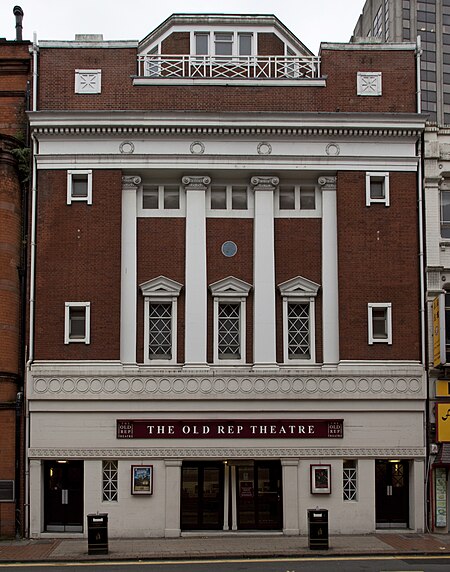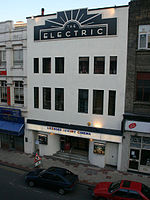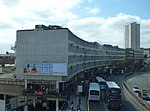Old Rep

The Old Rep (originally Birmingham Repertory Theatre) is the United Kingdom's first ever purpose-built repertory theatre, constructed in 1913, located on Station Street in Birmingham, England. The theatre was a permanent home for Barry Jackson's Birmingham Repertory Company, formed in 1911 from his amateur theatre group, The Pilgrim Players, founded in 1907. Jackson funded the construction of the theatre and established his professional company there. Architect S. N. Cooke, a colleague from the Birmingham School of Art, collaborated with Barry Jackson in the creation of the theatre. Both Jackson and Cooke took inspiration from the democratic nature of theatres that they had visited in Germany. The design of The Old Rep was particularly influenced by Max Littmann's 1908 Künstlertheater in Munich.In 2014, Birmingham Ormiston Academy, also known as BOA, successfully tendered for The Old Rep Theatre.The theatre is situated just opposite New Street Station, from which a blue plaque, above the theatre's first floor windows, to Barry Jackson can be seen. Two doors down, Britain's oldest working cinema can be found, the Electric Cinema.
Excerpt from the Wikipedia article Old Rep (License: CC BY-SA 3.0, Authors, Images).Old Rep
Station Street, Birmingham Digbeth
Geographical coordinates (GPS) Address Nearby Places Show on map
Geographical coordinates (GPS)
| Latitude | Longitude |
|---|---|
| N 52.47678 ° | E -1.89828 ° |
Address
Comfort Inn
Station Street
B5 4DY Birmingham, Digbeth
England, United Kingdom
Open on Google Maps








